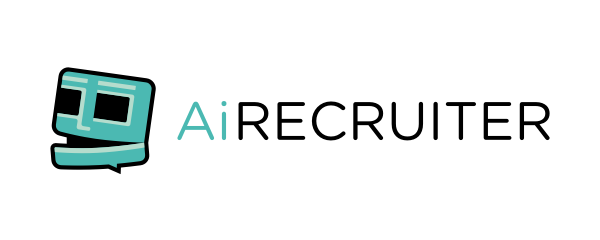In this article, our chief conversational AI consultant, Martyn Redstone, attempts to predict what 2021 will bring for conversational AI in recruitment.
Prediction 1: Conversational Recruitment Marketing
In 2021, candidates are overwhelmed and stressed, probably, when they come to your job board or career site. They’re worried about sending in their application, stressed about the process and anxious about getting a response.
What if they saw, instead, a friendly message pop up at that exact moment, saying “Do need help finding and applying for a job?”
Conversational marketing (championed by Drift) is as much about building your employer brand and generating demand for your company, as it is about moving candidates through the application journey and beyond.
Employer branding is about selling your brand and your open roles, but you’re also looking for somebody to join your team.
2021 will be the year that Employer Branding and teams and recruitment marketers understand that chatbots are part of a necessary toolkit and they will take up the practice of “conversational recruitment marketing”.
Prediction 2: Revenue Growth using Conversational AI
In the last few years we have seen a number of recruitment and staffing businesses start to use chatbots. This has mostly been to help candidates in the search and apply process, reactivate candidate databases and save recruiter’s time in their week.
However, what if you would bring this all together and use Conversational AI to find revenue growth opportunities in these conversations?
That’s exactly what AiRecruiter does. We take the standard chatbot and supercharge it, so that recruitment and staffing businesses don’t miss out on revenue growth opportunities.
2021 will be the year that Conversational AI will be the catalyst for growth in recruitment businesses.
Prediction 3: Assessment through Conversational AI
We’re now starting to see the emergence of assessment platforms that use conversational AI as a basis for Linguistic Assessment. Examples of some platforms doing this are:
Asking applicants to “have a chat” in order to be assessed for the role that they are applying for will grow more in 2021, through adoption of the above vendors’ technology.
As applicant numbers increase through 2021, recruiters’ time becomes more stretched. What better way to manage a high volume of applications by being able to screen AND assess ALL OF THE APPLICATIONS, with a level of trust for the assessment algorithm to tell you who to progress to the next stage.
Prediction 3: GPT-3
There’s been a lot said about GPT-3 over the past few months.
For those that don’t know, GPT-3 is an AI model that uses deep learning to provide human-like text. It has 175 billion machine learning parameters.
The quality of text generated by GPT-3 is so high that it is difficult to distinguish it from text written by a human. There have been newspaper articles written by GPT-3 that have fooled readers.
However, there are pros and cons around the different use-cases for GPT-3.
When it was first revealed by openAI, there was much talk about it being a powerful language model to use in chatbots and over conversational AI applications. However, as an unsupervised learning model (i.e. it self-learns from the Internet and user interactions) is has already shown itself to full foul of the worst parts of human behaviour – with users reporting racist language being used very early on in its life. Unfortunately we have seen this with other similar unsupervised training models used in chatbots in the past.
Where I do see the benefits and potential uses of GPT-3, though, in a recruitment context, is in areas such as the generation of job descriptions and job adverts, as well as copy used on career websites and employer branding campaigns. 2021 will see the first implementations of this technology in recruitment tech platforms.
Ultimately, it will be like having an on-tap copywriter in your team.
Prediction 4: Voice-UI and Zero-UI
Something that gets spoken about a lot, is the application of voice in recruitment.
We’ve seen many different applications – from asking your smart speaker to list your job search results, through to screening candidates via phone calls. Companies such as Jenna, Recii, My Career Fit and Tengai have all introduced voice-based solutions into the recruitment technology market in recent years.
Right now, though, I don’t think that anybody has got the application of voice completely right. But we’re definitely making huge strides in this space and respect has to be given to these vendors for being the trailblazers.
Ultimately, voice is the most natural way to interact with technology, but the feedback I hear is that answering a phone call to a ‘Robo-caller’ can end immediately with the receiver hanging up, due to the amount of spam calls that people get nowadays.
For me, voice leads on to having, what I call, Zero-UI. There need not be a user interface, hence Zero-UI. That’s where smart speakers come in… Alexa, Siri, Google Assistant, Cortana, Bixby etc.
I don’t have an interface when I ask Google to turn my lights on, or when I ask Alexa to set an egg timer, so why do I need one to apply for a job? I just speak – how natural is that?!?
It should be as simple as asking your smart assistant to list the latest job search results, give you more details on a role, provide employer reviews (glassdoor/google reviews) – anything to help with your decision to apply – and ask if you want to apply (and then push you to a voice application). Creating the perfect voice journey.
Just like an Echo device allows you to purchase from Amazon via voice, the job search and apply process should be enabled via Zero-UI.
2021 will see more voice applications coming to recruitment, but this also leads me on to….
My outlandish prediction: Digital Avatars and Face-First UI
As a caveat, this is an outlandish prediction, which I do not think will come true in 2021 but shows the possibilities of what we can do with Conversational AI. Maybe this will be the norm in 2025?
As I said above, voice is the most natural way that a human can interact with technology. However, is it natural to interact with a black or grey hockey puck-shaped speaker sitting on your desk?
Probably not.
So this means that it has to be more natural to interact, via voice, with a person. And most recruiters push back on the use of chatbots with the excuse that recruitment is a people-first process, so candidates want to talk to people. (FYI, this is incorrect and just protectionist behaviour – every survey or report on the subject says the complete opposite).
However, you cannot scale or replicate a human to talk to hundreds or thousands or people per day.
Tengai tried to prove this face-first hypothesis by using Furhat‘s social robot – humanoid bust, with a face projected onto it – to talk to candidates. This cannot scale and in the post-pandemic age of remote-first recruitment, inviting a candidate to an office for an interview cannot happen.
So people are now being interviewed online. And we’ve seen an explosion in the use of video technology because of the pandemic.
But you cannot scale synchronous video interviewing and a lot of candidate feel uncomfortable recording themselves in an asynchronous way.
So I want to introduce to you my outlandish prediction for 2021 – the conversational AI, avatar-based synchronous video interview:
Bonus points if you can name the film that I took inspiration from.
Final thoughts
We talk a lot about conversational AI within the candidate journey, but we do not spend much time talking about how we can use conversational AI as an enabler to the recruiter’s productivity.
Watch this space coming soon…






